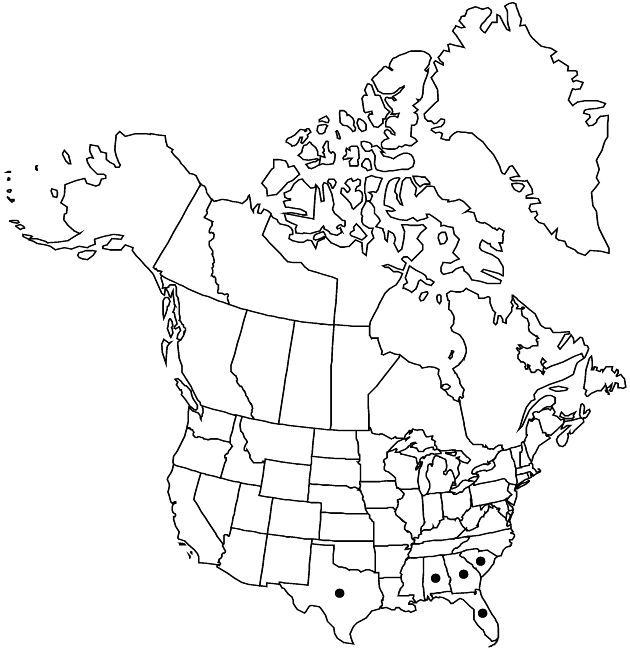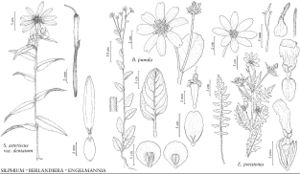Berlandiera pumila
Trans. Amer. Philos. Soc., n. s. 7: 342. 1840.
IllustratedEndemic
Basionym: Silphium pumilum Michaux Fl. Bor.-Amer. 2: 146. 1803
Synonyms: Berlandiera dealbata (Torrey & A. Gray) Small Berlandiera pumila var. dealbata (Torrey & A. Gray) Trelease Berlandiera tomentosa Poiret Berlandiera tomentosa var. dealbata Torrey & A. Gray Polymnia caroliniana S. tomentosum
Revision as of 22:04, 29 July 2020 by imported>Volume Importer
Plants to 100 cm. Stems (erect) usually branched (sometimes suffrutescent). Leaves evenly distributed along stems; usually petiolate (at least at mid-stem); blades oblong, oval, or ovate (widths 3/4–11/4 lengths, not lobed, except intergrades to B. ×humilis, bases truncate to subcordate), membranous, margins crenate, faces grayish velvety. Heads in paniculiform to corymbiform arrays. Peduncles hairy (hairs relatively fine, densely matted). Involucres 14–18 mm diam. Ray corollas deep yellow to orange-yellow, abaxial veins green, laminae 12–20 × 6–9 mm. Disc corollas red to maroon. Cypselae (obovate) 4.5–6 × 3–4 mm. 2n = 30.
Phenology: Flowering Apr–Aug.
Habitat: Sandy soils, roadsides, fields, woodland borders, open woodlots
Elevation: 30–100 m
Distribution

Ala., Fla., Ga., S.C., Tex.
Discussion
Selected References
None.
Lower Taxa
None.
"broader" is not a number.
... more about "Berlandiera pumila"
green +
introrse +
connate +
herbaceous +
scarious +
absent +
hirsute +
papillate +
bristlelike +
continuous +
ovate;oval;ovate;oval;oblong +
membranous +
winged;ribbed;winged;ribbed +
1;15 +
stigmatic +
absent +
zygomorphic +
winged +
dimorphic +
staminate +
staminate +
straight +
grayish +
velvety +
distinct +
proximal +
1;5 +
bisexual +
dispersed +
singly +
discoid +
indeterminate +
Present +
surrounding +
less campanulate;more or less hemispheric +
12mm;20mm +
6mm;9mm +
petiolate +
distributed +
deltate +
crenate +
2-carpellate +
inferior +
attached +
anatropous +
persistent +
fragile +
falling +
absent +
coroniform +
hairy +
tough +
thick +
absent +
connate +
persistent +
distinct +
falling +
Trans. Amer. Philos. Soc., n. s. +
1840 +
pistillate +
absent +
fertile +
paleate +
turbinate +
fibrous +
exalbuminous +
modifed +
2;3 +
alternate +
branched +
continuous +
2-branched +
papillate +
Berlandiera pumila +
Berlandiera +
species +
shorter +
cylindric +
shorter to longer than campanulate +
perennial +
